#nicholas serota
Photo
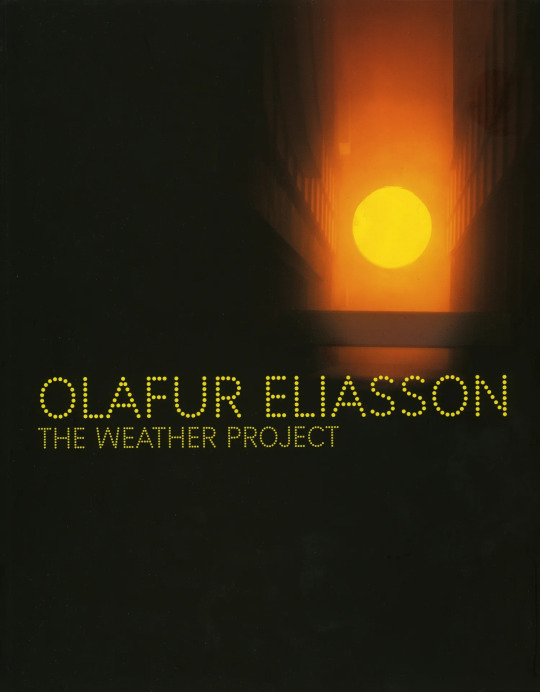
Olafur Eliasson: The Weather Project, Edited by Susan May, Texts by Olafur Eliasson, Jane Burton, Helen Charman, Brian Gray, Sophie Harrowes, Jacques Herzog, Bruno Latour, Doreen Massey, Susan May, Israel Rosenfield, Nicholas Serota, and Dominic Willsdon, Design by Chris Rehberger, Tate Publishing, London 2003 [Exhibition: Turbine Hall, Tate Modern, London, October 16, 2003 – March 21, 2004]
(on the way of Art Books & Ephemera)
#graphic design#art#installation#catalogue#catalog#cover#olafur eliasson#studio olafur eliasson#susan may#jane burton#helen charman#brian gray#sophie harrowes#jacques herzog#bruno latour#doreen massey#israel rosenfield#nicholas serota#dominic willsdon#chris rehberger#tate#tate modern#tate publishing#2000s
28 notes
·
View notes
Text
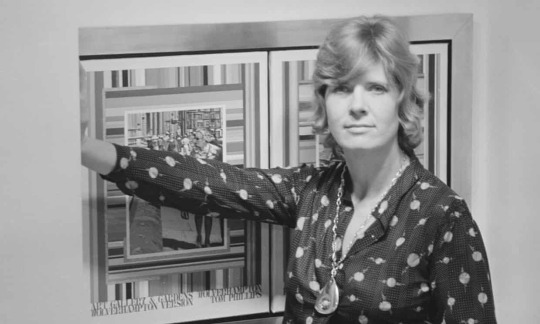
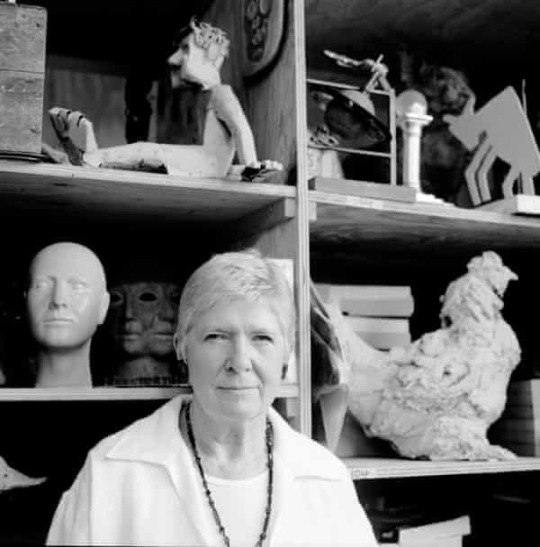
Angela Flowers, London galleria, in the 1970s and in 1999 / Eamonn McCabe/The Guardian
Her gallery dealt only in the work of living British artists, and nothing made before 1952. For all that, most of its stable had been born rather earlier. Although there was no such thing as a Flowers style, the work she showed tended towards the established. As a result, it was ignored by such arbiters of avant-garde taste as Nicholas Serota and Charles Saatchi. This was a source of some annoyance to Flowers, although it did her gallery no obvious harm.
Flowers’s artists were very loyal to her: painters such as Tom Phillips, Derek Hirst and Bernard Cohen were all with the gallery for more than 30 years, as was the sculptor Nicola Hicks. (Hicks, additionally, married Flowers’s youngest son, Daniel.)
1 note
·
View note
Text
Harvard's Refrencing
About Pattern (2024) About us About Pattern | About Us [19/04/24]
Beut (2024) Harlequin Above and Below Wallpaper Harlequin Above and Below Wallpaper | beut.co.uk [ Accessed 20/04/24]
Beut (2024) Harlequin Multitude Wallpaper Harlequin Multitude Wallpaper | beut.co.uk [ Accessed 20/04/24]
Bored Panda (2024) Photographer Travels Through Time By Inserting Herself Into Her Childhood Photos Photographer Travels Through Time By Inserting Herself Into Her Childhood Photos | Bored Panda [ Accessed 01/04/24]
Chino Otsuka Imagine Finding Me 1975-2005 chino otsuka [ Accessed 01/04/24]
Dani Ives (2024) Dani Ives Fibre Artist Dani Ives : Fiber Artist
Encyclopedia.design (2024) Frida Kahlo (1907-1954) - Symbolism & Metaphor Frida Kahlo - Symbolism and Metaphor critical for communication (encyclopedia.design) [ Accessed 06/04/24]
Frida Kahlo (2024) My Grandparents, My Parents and Me, 1936 by Frida Kahlo My Grandparents, My Parents, and Me, 1936 by Frida Kahlo [ Accessed 06/04/24]
Frida Kahlo (2024) Portrait of Frida’s Family, 1950 by Frida Kahlo Portrait of Frida's Family, 1950 - by Frida Kahlo [ Accessed by 06/04/24]
Frida Kahlo (2024) The Love Embrace of the Universe, the Earth (Mexico), Myself, Diego and Señor Xólotl The Love Embrace of the Universe, the Earth (Mexico), Myself, Diego and Señor Xólotl (fridakahlo.org) [ Accessed by 06/04/24]
Jane Clayton & Company (2024) Libreria Wallpaper by Cole & Son Libreria Wallpaper by Cole & Son in Rich Multi | Jane Clayton [ Accessed 21/04/24]
Jane Clayton & Company (2024) Khulu Vases Wallpaper by Cole & Son Khulu Vases Wallpaper by Cole & Son in 12056 | Jane Clayton [ Accessed 21/04/24]
Liang. C, Kolovos. M, (2024) Introduction to Developmental Psychology (Psychology) Birmingham City University [ Accessed pages 24-30 09/04/24]
My Modern Met (2024) Woman Photoshops Present-day Self into Childhood Photos Woman Photoshops Present-Day Self into Childhood Photos (mymodernmet.com) [ Accessed 01/04/24]
Mansading Textile (2024) My Astute Mother MY ASTUTE MOTHER | mansading (masading.com) [ Accessed 12/04/24]
Mansading Textile (2024) Making of My Astute Mother Making of My Astute Mother | mansading (masading.com) [ Accessed 12/04/24]
Mansading Textile (2024) Mother’s Love Mother's love | mansading (masading.com) [ Accessed 12/04/24]
National Portrait Gallery (Tuesday 11th April 2023) New Commision by Sir Steeve McQueen brings his work into National Portrait Gallery’s Collection, as portrait of Sir Nicholas Serota is unveiled press-release_sir-nicholas-serota-by-sir-steve-mcqueen.pdf (npg.org.uk) [ Accessed 18/04/24]
Pinterest (2024) Divine mother Pinterest [ Accessed 06/04/24]
Pure (2023) Morag Caister PAOTY 2022 winner commissioned to paint Sir Lenny Henry to be exhibited at National Portrait Gallery — Pure Arts Group [ Accessed 18/04/24]
Quinn, Bradley. (2009) Textile Designers at the cutting edge, London, Laurence King
Style, Bowie. (2010) Print & Pattern, London, Laurence King
SimplyPsychology (2024) John Bowlby’s Attachment Theory John Bowlby's Attachment Theory (simplypsychology.org) [ Accessed 08/04/24]
Verywellmind (2024) What Is Attachment Theory? Attachment Theory: Bowlby and Ainsworth's Theory Explained (verywellmind.com) [ Accessed 08/04/24]
0 notes
Text
Studio Project 2: Self-Directed Research
Artist Research
Francesco Clemente
Often classified as a Neo-Expressionist, Francesco Clemente makes rich gouache paintings and pastel drawings that range from distorted portraits to dreamlike scenes of violence and eroticism. Throughout his strange figurations, Clemente depicts corporeal details such as mutilated limbs, floating eyes, and intertwined bodies with a surrealistic detachment and sense of sublime symbology: Clemente, who splits his time between New York and Varanasi, India, is particularly inspired by Indian mysticism, art, and culture. The artist has exhibited in New York, Milan, Rome, London, Amsterdam, Madrid, and Zürich. Clemente’s work has sold for up to six figures on the secondary market and belongs in the collections of the Art Institute of Chicago, the Centre Pompidou, the Guggenheim Museum, the Metropolitan Museum of Art, the Museum of Modern Art, the Rubell Museum, the Stedelijk Museum, and the Tate.
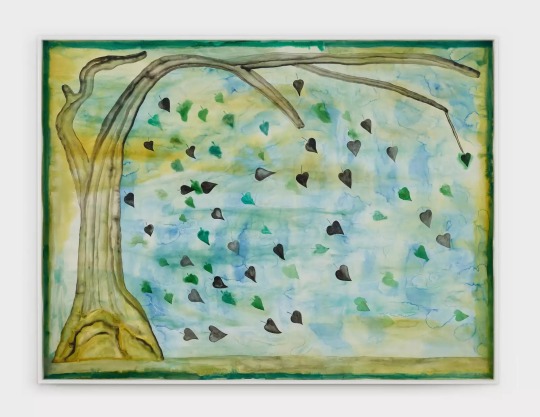
Air, 2021
Watercolor on paper
60 × 80 in | 152.4 × 203.2 cm
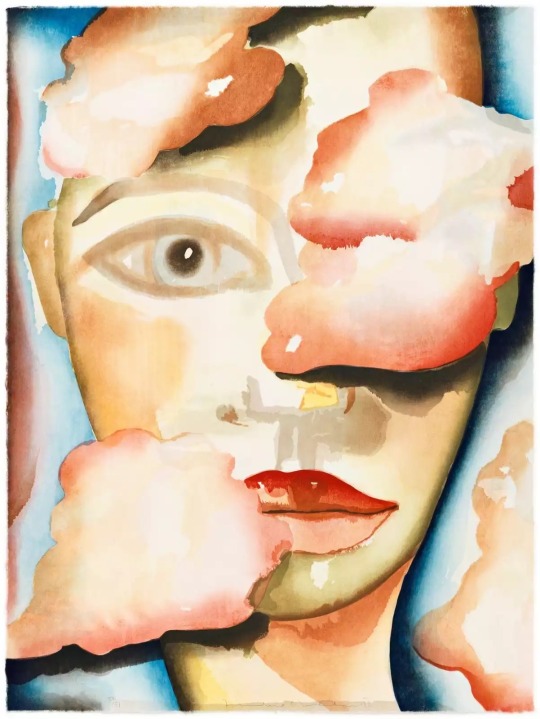
Air, 2007
Twenty-seven color Ukiyo-e woodcut hand-printed from 21 woodblocks
24 × 18 in | 61 × 45.7 cm
Edition 1/51
Inka Essenhigh
Inka Essenhigh (b. 1969, Bellefonte, PA) received her Master of Fine Arts from School of Visual Arts, New York, NY and her Bachelor of Fine Arts from Columbus College of Art & Design, Columbus, OH.

Inka Essenhigh, "Bleeding Hearts" (2021), Enamel on semi-rigid canvas, 121.9 x 96.5 cm, 48 x 38 in
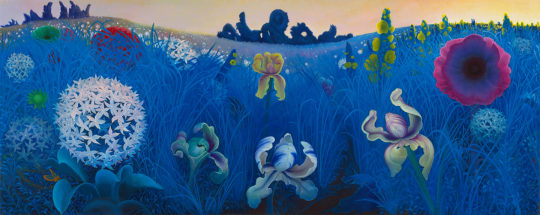
Inka Essenhigh, Blue Field, 2021
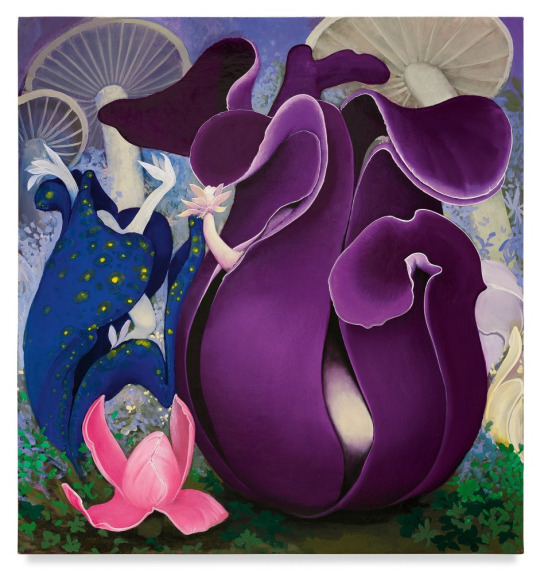
Inka Essenhigh, Purple Pods, 2019, Enamel on canvas, 34 x 32 inches
She paints a fluid, dreamy, fantasy landscape of animated, human-like trees and biomorphic beings – almost always women – veering towards a narrative art.
Chris Ofili
Introduction Christopher Ofili, (born 10 October 1968) is a British painter who is best known for his paintings incorporating elephant dung. He was Turner Prize-winner and one of the Young British Artists. Since 2005, Ofili has been living and working in Trinidad and Tobago, where he currently resides in the city of Port of Spain. He also has lived and worked in London and Brooklyn. Ofili has utilized resin, beads, oil paint, glitter, lumps of elephant dung and cut-outs from pornographic magazines as painting elements. His work has been classified as "punk art." WikidataQ1077608

Chris Ofili, The Great Beauty, 2020-2023, oil and charcoal on linen, 200 x 310 cm, 78 3:4 x 122 in © Chris Ofili. Courtesy the artist and Victoria Miro
"The Seven Deadly Sins are paintings in constant transition: between surface and depth, figure and foliage, light and dark; between mythology and religion, the sacred and profane."
"Nicholas Serota, who recently retired from his twenty-nine-year reign at the Tate, told me that Doig’s paintings “have a kind of mythic quality that’s both ancient and very, very modern. They seem to capture a contemporary sense of anxiety and melancholy and uncertainty. Lately, he’s gone more toward the sort of darkness we associate with Goya.”
"Ornamentation and visual excess have always featured in Ofili’s art"

Almost medieval … Chris Ofili, Requiem, 2023 (detail) commissioned for Tate Britain’s north staircase. Photograph: Thierry Bal/© Chris Ofili. Courtesy the artist
Emily Eleveth
Emily Eveleth is widely known for her paintings of jelly doughnuts. In fact, The Boston Globe wrote about this fascination in a 2008 article called “It’s time to paint the doughnuts.” She has had over 20 solo shows in museums and galleries on the East Coast, and received masters’ degrees from Smith College and the Massachusetts College of Art.
Spanning the boundaries between portrait, landscape, and object of projected desire, Emily Eveleth’s paintings form a genre unto themselves. Her ongoing series of paintings of doughnuts invests this unlikely subject with unexpected presence and identity. "Eveleth's paintings restlessly shift across a spectrum of meanings, covering along the way all the distances between opposing significances; prosaic and profound, profane and sacred, banal and intriguing, to say nothing of the axis between cool asexuality and gushing, if veiled, sexuality." *
In her concurrent series of figurative images lone figures stand in enigmatic isolation. Lost in private worlds the figures "seem to invite the viewer's gaze, acknowledge it, and then absorb it, folding it into their own particular dramas." ** These figurative projections of doubt and uncertainty appear paradoxical to their central declarative placement and openness. The dramatic lighting's interdependence on the rich enveloping darkness allows the figures to simultaneously emerge from and be enveloped by the inky space, projecting a quiet vulnerability.
Rashid Johnson
My works for the self-directed project depict a series of nightmares stemming from pain, anxiety, trauma, and several other mental health disorders. With the use of Vanitas Symbolism – the kind of painting that was popularised in the 17th century, often featuring still-life arrangements, including fruits, flowers, and other objects as symbols of the transience of life and the inevitability of death, I incorporate symbols of decay, such as wilting flowers or rotting fruits to convey the idea that even the most beautiful and vibrant aspects of life are subject to decay and eventual demise, suggesting a connection to human anguish and the fragility of existence. Moreover, I place decaying or withering fruits or flowers alongside depictions of human suffering or anguish to create a parallel between the ephemeral beauty of nature and the transient nature of human existence. The alignment between the fragile blooms and the sombre or distressed subject matter can evoke feelings of sorrow, mortality, or the fleeting nature of happiness. Plus, fruits and flowers are used metaphorically to represent human emotions and experiences. The work depicting a wilting flower or a bruised fruit symbolises a person's fading or wounded spirit undergoing emotional distress or pain. Similarly, an arrangement of fruits cut open or damaged serves as a metaphor for a human subject's inner turmoil or vulnerability. In terms of the colour palette, the one chosen for the fruits and flowers in a painting contributes to the depiction of human anguish. Dark, muted, or desaturated colours are used to represent sadness, despair, or suffering, while various parts are depicted with sharp contrasts between vibrant and sombre hues can create a sense of tension or conflict.
Georgia O'Keeffe: Known for her large-scale close-up floral paintings, Georgia O'Keeffe often explored the sensual and symbolic qualities of flowers. While her works are not explicitly focused on human suffering, they often evoke a sense of introspection, vulnerability, and emotional depth. Her magnified flower paintings, such as "Black Iris" or "Calla Lily Series," can be interpreted as metaphors for the human experience, including anguish and desire.

Mind Vomit
‘This represents the daily conversation within my mind. Anxious thoughts, depressive thoughts, sub-thoughts, thoughts about the thoughts, a constant critical commentary and a tornado of darkness, numbness and complete inner turmoil.’
Goya’s disasters of War
Jake & Dinos Chapman
destroyed bodies | Otto Dix
George Grosz
0 notes
Text
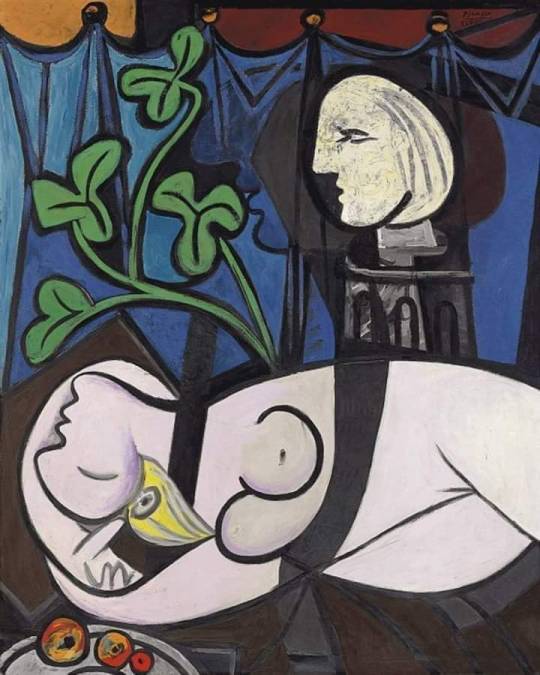
PICASSO...su cuadro más caro.
Óleo sobre lienzo. 160 x 130 cms.
El cuadro más caro jamás vendido en una subasta, el denominado ‘Desnudo, Hojas verdes y Busto’ del español Pablo Picasso, se podrá contemplar hoy por primera vez en el Reino Unido.
La obra fue pintada por el artista malagueño en el año 1932, y estará expuesta al público en la galería de arte contemporáneo Tate Modern de Londres, concretamente en una nueva sala dedicada a Picasso. El lienzo fue vendido en la galería Christie’s en Nueva York el pasado mayo por un precio que marcó un récord mundial al alcanzar la cifra de 106,5 millones de dólares (81,9 millones en euros).
“Se trata de un cuadro destacado de Picasso y estoy encantado de que, gracias a la generosidad del prestador, podamos exponerlo ante el público británico”, indicó el director de la Tate, Nicholas Serota, a los medios británicos.
La obra en cuestión es un lienzo de grandes dimensiones en el que Picasso retrató a su amante Marie-Théresè Walter, y en el que también aparece la cabeza con el perfil del propio artista, en un pedestal. Hasta el momento de su venta, el cuadro formaba parte de la colección americana de Mrs. Sidney F. Rody, una de las más prestigiosas del mundo del arte modernista.
0 notes
Text
Richard Sharp a insisté sur le fait qu'il n'avait aucun conflit d'intérêts lorsqu'il a été nommé président de la BBC par Boris Johnson, malgré les allégations selon lesquelles il aurait aidé à obtenir un prêt pouvant atteindre 800 000 £ pour le Premier ministre seulement une semaine plus tôt.Le président de la BBC a déclaré mardi qu'il était convaincu d'avoir obtenu le poste en 2021 "au mérite" et a déclaré qu'il ne démissionnerait pas.Ses commentaires sont venus après la Le Sunday Times révélé qu'au cours du processus de candidature, Sharp avait présenté son ami Sam Blyth, qui proposait de garantir un prêt à Johnson, au secrétaire du cabinet, Simon Case.Sharp a déclaré à la BBC dans une interview: «Après avoir eu une discussion avec le secrétaire du cabinet sur la manière d'éviter un conflit – et la perception du conflit – je me sentais à l'aise – et je le sens toujours – il n'y avait pas de conflit."A ce stade, ce que je cherchais à faire était de m'assurer que le processus était suivi exactement par le livre. Le processus n'avait pas commencé, d'aucune sorte, en termes de soutien que Sam [Blyth] allait fournir au Premier ministre.Sharp a déclaré qu'il n'était impliqué dans aucune discussion sur les finances du Premier ministre, et que lorsqu'il a approché Case en 2020 pour lui faire part de l'offre de Blyth de garantir un prêt pour un Premier ministre, il a été convenu qu'il ne devrait plus jouer de rôle dans ces négociations.Il a dit qu'il avait accepté d'approcher Case au nom de Blyth parce qu'il travaillait à Downing Street à l'époque en tant que conseiller économique."Avec le recul, en particulier à l'époque, j'aurais peut-être dit" faites-le vous-même ", mais je travaillais à Downing Street à l'époque", a-t-il déclaré.Sharp parlait après deux jours d'allégations concernant son implication dans le prêt de 800 000 £ de Johnson. Ces allégations ont déclenché une enquête de William Shawcross, le commissaire aux nominations publiques, sur la façon dont il a obtenu le poste de président de la BBC. Sharp a déclaré mardi qu'il se félicitait de cette enquête.Pendant ce temps, Sharp lui-même a demandé au comité des nominations de la BBC, qui comprend le directeur général, Tim Davie, et le directeur indépendant principal de la société, Nicholas Serota, d'enquêter pour savoir s'il y a eu un conflit d'intérêts depuis qu'il a rejoint la présidence en 2021. Le conseil d'administration n'a pas le pouvoir de bloquer ou d'évincer un président de la BBC.Inscrivez-vous pour Première éditionNewsletter quotidienne gratuiteArchie Bland et Nimo Omer vous guident à travers les meilleures histoires et ce qu'elles signifient, gratuitement tous les matins de la semaine
0 notes
Photo
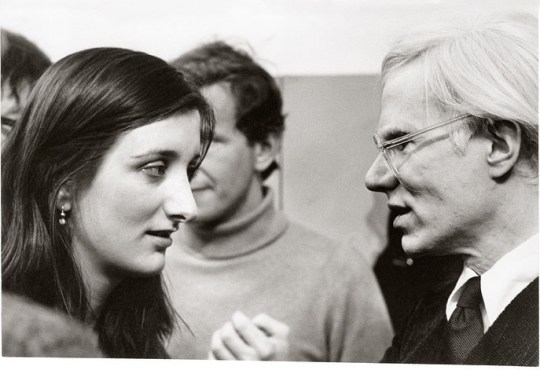
Bice Curiger and Andy Warhol in 1976. From 'C Is for Curator: Bice Curiger – A Career,' a 404-page deep dive into the career of the internationally celebrated curator and cofounder of @parkettart Launching tonight at 6:30 PM @swissinstitute During the reception and signing, there will be a brief Q&A with Curiger, Imhof and SI Director @steffihessler Edited with text by Dora Imhof. Text by Katharina Fritsch, Kathy Halbreich, Thomas Hirschhorn, Massimiliano Gioni, Hans Ulrich Obrist, Nicholas Serota, Philip Ursprung. Read more about the book via linkinbio. #bicecuriger #cisforcurator @printedmatterinc https://www.instagram.com/p/CjDyKDuu3tr/?igshid=NGJjMDIxMWI=
0 notes
Photo
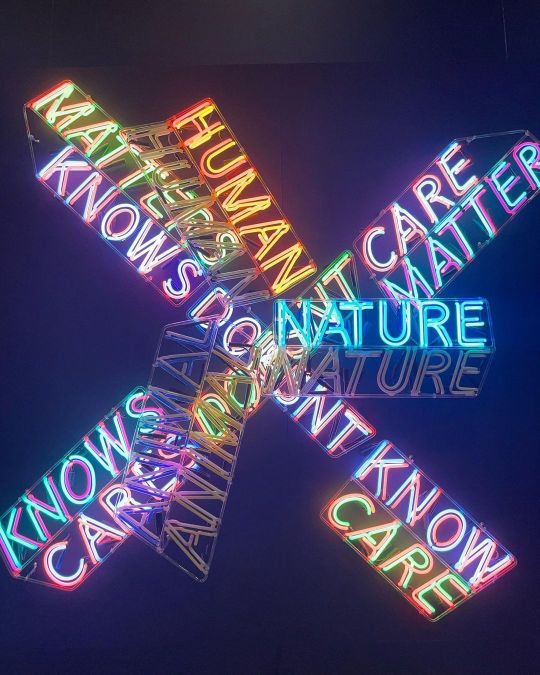
@pirelli_hangarbicocca @brucenaumanart Pirelli HangarBicocca BRUCE NAUMAN Neons Corridors Rooms. Curated by Roberta Tenconi and Vicente Todolí with Andrea Lissoni, Nicholas Serota, Leontine Coelewij, Martijn van Nieuwenhuyzen and Katy Wan Organized by Pirelli HangarBicocca, Tate Modern, London and Stedelijk Museum Amsterdam Exhibition: 15 September 2022 – 26 February 2023 HOURS EXHIBITIONS Mon-Wed closed Thu-Sun 10.30AM-8.30PM Pirelli HangarBicocca, Via Chiese 2, 20126 Milan https://pirellihangarbicocca.org/en/exhibition/bruce-nauman/ https://estherartnewsletters.com/2022/08/29/bruce_nauman_pirelli22/ https://pirellihangarbicocca.org/en/hours-and-to-reach-us/ @deniseschellmann (hier: Pirelli HangarBicocca) https://www.instagram.com/p/CikyFbbshcI/?igshid=NGJjMDIxMWI=
0 notes
Link
#art#Nicholas Serota#ACE#arts#Arts Council England#community#outreach#creative industries#people#creativity#arts industry#fine art#create#howbenefitgalworks#artist#artists#artists on tumblr#education#accessible#accessibility
1 note
·
View note
Link
What I find most interesting about this artist is his ability to portray an idea or a feeling that does not yet appear to be fully formulated. Narrating impulsively with sometimes flowing and sometimes violent bursts of line and color, like writing a feeling down in a long forgotten script. We express quite allot of emotion in our handwriting and this can bring a whole new dynamic to a work.
2 notes
·
View notes
Photo

Cy Twombly, April 25, 1928 / 2022
(image: Werner Schloske (photograph), Cy Twombly, Roma, ca. 1962. Bibl.: Cy Twombly, (2008), Edited by Nicholas Serota, Essays by Nicholas Cullinan, Tacita Dean, and Richard Shiff, Translation by Valentina Ravaglia, Electa, Milano, 2009, p. 246. Published on the occasion of an exhibition at Galleria nazionale d'arte moderna, Roma, March 5 – May 24, 2009, in collaboration with Tate, London)
/ l'Altissimo /
#graphic design#art#drawing#visual writing#photography#exhibition#catalogue#catalog#cy twombly#birthday anniversary#nicholas serota#nicholas cullinan#tacita dean#richard shiff#valentina ravaglia#galleria nazionale d'arte moderna#tate#electa#1920s#1960s#2000s#2020s
139 notes
·
View notes
Photo

Skill without imagination is craftsmanship and gives us many useful objects such as wickerwork picnic baskets. Imagination without skill gives us modern art.
- Tom Stoppard, Artist Descending a Staircase
Sir Anish Kapoor’s ArcelorMittal Orbit tower was completed in 2012 at a cost of £19 million ($27 million). It was intended to be a permanent lasting legacy of London's hosting of the 2012 Summer Olympic and Paralympic Games, assisting in the post-Olympics regeneration of the Stratford area. At 376 feet (114.5 metres) it became the UK’s tallest public artwork.
London Mayor Boris Johnson put into motion a design competition that was held in 2009 and it called for designs for an "Olympic tower". A 9 panel commission made of the great and the good was set up to recommend to both Johnson and the government. It received about 50 submissions. Boris Johnson had said that his early concept for the project was something more modest than Orbit, along the lines of "a kind of 21st-century Trajan's Column", but this was dropped when more daring ideas were received. Boris Johnson was believed to want something like the Eiffel Tower or the Statue of Liberty what he and the government settled on was something completely different with Turner-Prize winning artist Sir Anish Kapoor in partnership with Cecil Balmond of Arup Group, an engineering firm.

Kapoor said that one of the influences on his design was the Tower of Babel, the sense of "building the impossible" that "has something mythic about it", and that the form "straddles Eiffel and Tatlin". Balmond, working on the metaphor of an orbit, envisaged an electron cloud moving, to create a structure that appears unstable, propping itself up, "never centred, never quite vertical". Both believe that Orbit represents a new way of thinking, "a radical new piece of structure and architecture and art" that uses non-linearity – the use of "instabilities as stabilities." The spaces inside the structure, in between the twisting steel, are "cathedral like", according to Balmond, while according to Kapoor, the intention is that visitors will engage with the piece as they wind "up and up and in on oneself" on the spiral walkway.
The Independent described Orbit as "a continuously looping lattice ... made up of eight strands winding into each other and combined by rings like a jagged knot". The Guardian describes it as a "giant lattice tripod sporting a counterweight collar around its neck designed to offset the weight of its head, a two-storey dining and viewing gallery". According to the BBC, the design incorporates the five Olympic rings.
Upon its launch Johnson said "It would have boggled the minds of the Romans. It would have boggled Gustave Eiffel." Nicholas Serota, a member of the design panel, said that Orbit was a tower with an interesting twist, with "the energy you might traditionally associate with this type of structure but in a surprisingly female form.”
When Anish Kapoor’s commission for the Olympic Park in London was unveiled no one really noticed, as most viewers thought it was still under construction.
Orbit confused viewers for sometime, but when they realised that the twisted metal structure in place was indeed an artwork they were up in arms. It was soon slammed by critics and citizens alike.

Overall reception to Orbit was mixed, but mostly negative. With regard to its potential as a lasting visitor attraction, The Guardian's Mark Brown reflected on the mixed fortunes of other large symbolic London visitor attractions such as the popular, but loss-making, Thames Tunnel; the Skylon structure, dismantled on the orders of Winston Churchill; and the successful London Eye. When plans were first reported for an Olympic tower, the media pointed to a manifesto pledge of Johnson's to crack down on tall buildings, in order to preserve London's "precious" skyline. The Times criticised the idea as a vanity project of Johnson's, with a design "matching his bravado", built to "seal his legacy", surmising it would be compared to other similar vanity projects such as the "wedding cake", the Monument to Vittorio Emanuele II built in Rome, or the Neutrality Arch, a rotating golden statue erected by Turkmenistan's President Saparmurat Niyazov, while comparing Johnson to Ozymandias. Art critic Brian Sewell said "Our country is littered with public art of absolutely no merit. We are entering a new period of fascist gigantism. These are monuments to egos and you couldn't find a more monumental ego than Boris."
The Times reported the description of it being the "Godzilla of public art". In October 2012, ArcelorMittal Orbit was nominated and made the Building Design magazine shortlist for the Carbuncle Cup - an award for the worst British building completed in the past year, which was ultimately awarded to the Cutty Sark renovation.
Jay Merrick of The Independent said that "[Orbit's] sculptural power lies in its ability to suggest an unfinished form in the process of becoming something else", describing how its artistic riskiness elevated it above the banal artworks of the public art movement that have been built elsewhere in Britain's towns and cities. Merrick was of the opinion that it would be either loved or hated, being a design which is "beautifully fractious, and not quite knowable".
Jonathan Glancey of The Guardian described Orbit as "Olympian in ambition" and a "fusion between striking art and daring engineering", and said that, the Aquatics Centre apart, it represented the architecturally striking Joker in the pack, given that the rest of the landscaping and architecture for the Games "promises little to get excited about". He believed it would become a "genuine eyecatcher" for the Olympics television coverage, with its extraordinary form being a "strange and enticing marriage of sorts" between the Eiffel Tower and the un-built early Soviet era Tatlin's Tower, with the biblical Tower of Babel as "best man".

The Times writer Tom Dyckhoff, while calling it "a gift to the tabloids" and a "giant Mr. Messy", questioned whether the Olympic site needed another pointless icon, postulating whether it would stand the test of time like the London Eye and become a true icon to match the Eiffel Tower, or a hopeless white elephant. Suggesting the project had echoes of Tatlin's Monument to the Third International, and especially Constant Nieuwenhuys' utopian city New Babylon, he asked whether Orbit was just as revolutionary or possessed the same ideological purpose, or whether it was merely "a giant advert for one of the world’s biggest multinationals, sweetened with a bit of fun".
Rowan Moore of The Guardian questioned if it was going to be anything more than a folly, or whether it would be as eloquent as the Statue of Liberty. He speculated that the project might mark the time when society stops using large iconic projects as a tool for lifting areas out of deprivation. He questioned its ability to draw people's attention to Stratford after the Games, in a similar manner to the successes of the Angel of the North or the Guggenheim Museum Bilbao. He also questioned the piece's ability to strike a chord like the Angel, which he believed had at least "created a feelgood factor and sense of pride" in Gateshead, or whether it would simply become one of the "many more unloved rotting wrecks that no one has the nerve to demolish". He postulated that the addition of stairs and a lift made Orbit less succinct than Kapoor's previous successful works, while ultimately he said "hard to see what the big idea is, beyond the idea of making something big".
Fellow Guardian writer John Graham-Cumming rejected comparisons to icons like the Eiffel Tower, which had itself not been intended to be a lasting monument, only persisting into public acceptance as art through being useful; he also pointed out the Colossus of Rhodes collapsed within a few decades, and the Tower of Babel was "constructed to glorify those that constructed it." He suggested that a future mayor should reconsider whether it should be pulled down. Questioning its corporate role, he believed that meant it looked less and less like a work of art and more like a vanity project.
Even Sir Anish Kapoor acknowledged the criticism and said of its clunky features,“It’s an object with all its elbows sticking out and it is slightly awkward, but I think I made it for that reason, I wanted it to be slightly awkward.”

After the 2012 Olympic Games, the Orbit tower was used as an observation tower, running at a loss of £520,000 ($884,000) in 2014–15, according to the BBC—or losing up to £10,000 ($17,000) a week in 2014, according to the Guardian newspaper.
Amidst the rising clamour of the costs matched only by the disdainful disinterest in the massive sculpture, something had to be done.
To appease Londoners, ex-London Mayor Boris Johnson brought in Carsten Höller to add a slide to the 376 feet tall artwork, making it the highest slide in Europe.
Kapoor later said he was pushed into the high profile collaboration by Johnson. Kapoor would later say that Johnson’s request “felt to me as if it was turning the whole thing in the wrong direction.”
“It was not always my thinking. The mayor foisted this on the project and there was a moment where I had to make a decision - do I go to battle with the mayor or is there a more elegant or astute way through this?,” he told the Guardian.
“I knew of Carsten’s work so I thought, well, who better than a fellow artist to join up with and make this a positive story rather than a negative… Luckily, and thankfully, Carsten was open to it, so we found a way round this,” Kapoor explained.
Judging by the unforgettable success of Höller’s slide installation at Tate Modern’s Turbine Hall, it’s easy to imagine what made Kapoor click and extend the invitation to the Belgian-born Stockholm-based artist.
“One makes artworks for other reasons than profit,” Kapoor told the Guardian. “I understand this is run as a so-called attraction, which I have problems with personally… I want it to be slightly more highbrow than that, without wanting to be pompous about it. There’s a difference between a fairground ride and art,” he added.

Höller, meanwhile, took a more lighthearted approach, urging people to embrace “the amusement side of it.”
“A child might be here purely for the slide, while the serious art lover might see this in purely formalistic terms. I personally like the confusion, that you don’t know what it is but it still creates a very unique experience,” he told the Guardian.
The ArcelorMittal Orbit re-opened to the public on 5 April 2014. Since then it has done below average business in attracting people to come and visit it or try the slide.
The London Legacy Development Corporation (LLDC), which runs the park where the sculpture is located, released numbers revealing the sculpture’s sizeable debt and a steep drop in visitors. Steel magnate Lakshmi Mittal had provided a £9.2 million ($11.2 million) loan to help pay for the original construction of the sculpture, but this loan has ballooned to £13 million due to the accrual of interest.
Ticket sales to the observation platform and a tunnel slide designed by Carsten Höller were meant to help repay the loan, but low visitor attendance prompted a £58,000 ($70,000) loss in 2018/19 alone. Visitor numbers have dropped from a high of 193,000 in 2016/17, when Höller’s slide was introduced, to 155,000 in 2018/19.
It’s not just an artistic folly but a commercial one too.
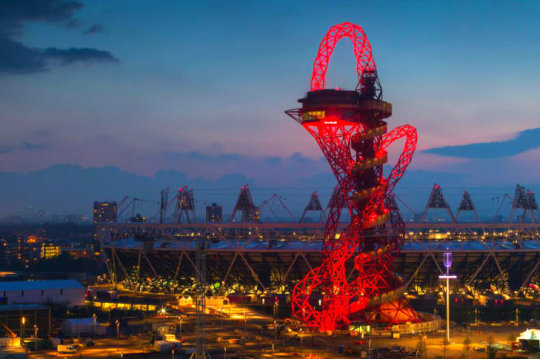
It's not wholly fanciful that such artistic scuptural landmarks can help lift places. No one can put a figure on jobs created or investments made in Gateshead thanks to the Angel of the North, but it has at least created a feelgood factor and sense of pride. The Bilbao Guggenheim of 1996, still the archetype of such town-boosting, certainly placed a relatively obscure city at the centre of attention.
Buildings can't do it alone and if people find their attention has been drawn only to a wasteland, they will go away again. The Guggenheim worked because there were also dull practical things in Bilbao such as new transport infrastructure and business parks.
But the most important ingredient of a successful icon is that it works artistically. It has to strike a chord, sound the right note, catch a mood, win hearts and confound sceptics. In other words it has to be aesthetically pleasing because it’s good art made by equally by great craft and graft.
The ArcelorMittal Orbit has become an unloved rotting wreck that no one has the nerve to demolish.
#orbit#stoppard#quote#britain#art#sculpture#modern art#olympics#society#culture#aesthetics#anish kapoor#carsten holler
39 notes
·
View notes
Text
London Trip
We took a visit to the London portrait gallery during the London trip. The gallery has a collection of portraits from various people throughout history. During my visit I was fascinated by the different ways artists captured the essence of their subjects in the paintings. It was also interesting to see the different painting styles from the different years and how it’s changed along with the mediums. While looking around I saw a couple artists who inspired me to produce my own work and capture my grandma in a similar way.
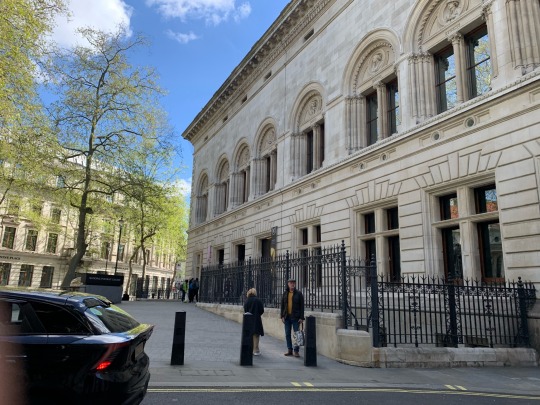
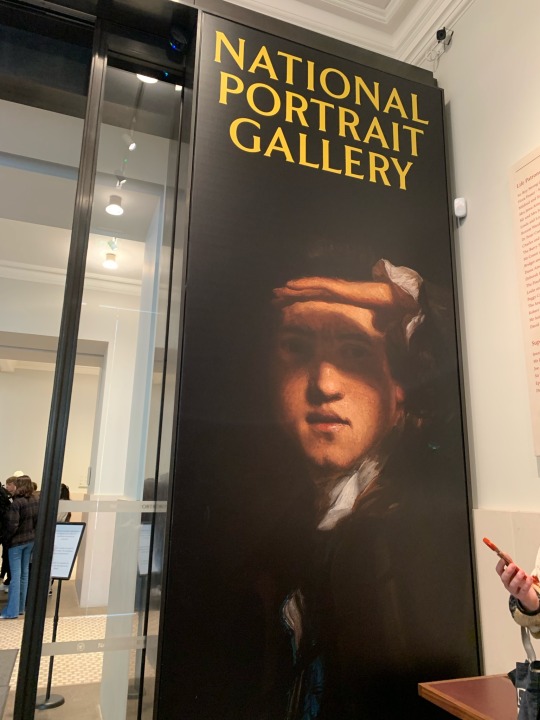
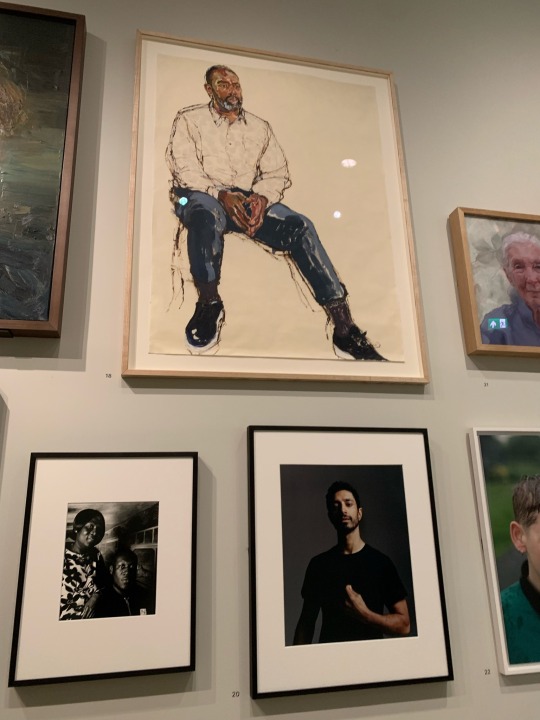
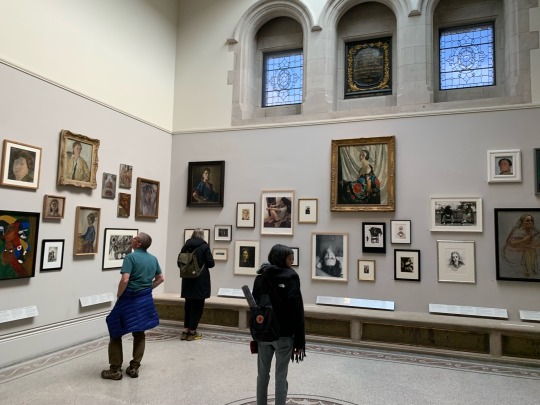
The first one was an artist called Sir Steve Mcqueen and the piece was called Sir Nicholas Serota. When creating this piece Sir Steve Mcqueen wanted to capture Serota in a different light so he photographed him in different angles and then used a technique called double exposure to overlay the images ontop of each other. I liked how this looked and I wanted to try this with different pictures of my grandma and I throughout the years I experimented with different filters and I like how interesting it looks. Overall the trip was a useful insight on different ways I could produce work from my grandmother and I saw some techniques and mediums that I would like to further explore throughout this project.
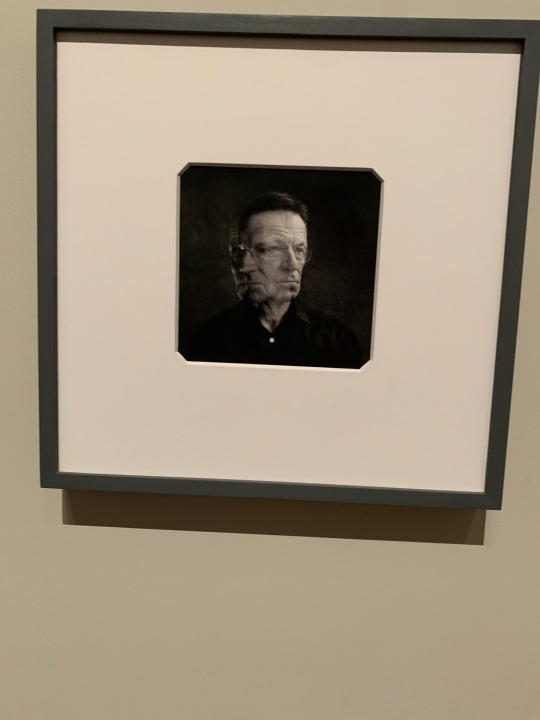

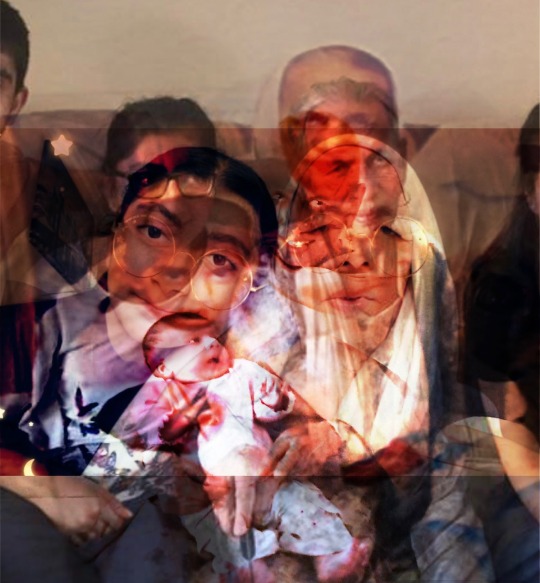
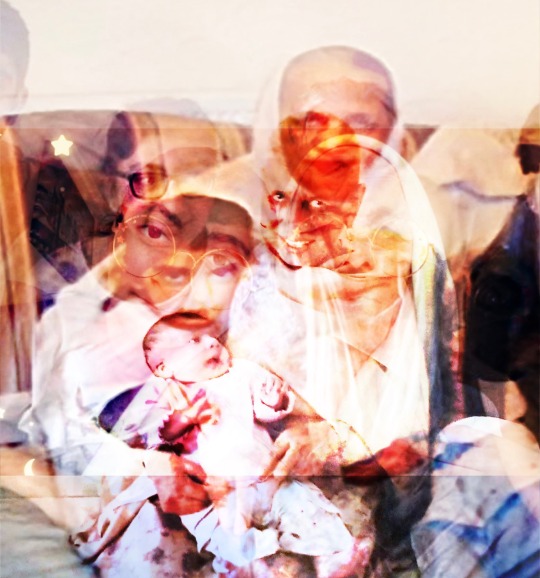
0 notes
Photo
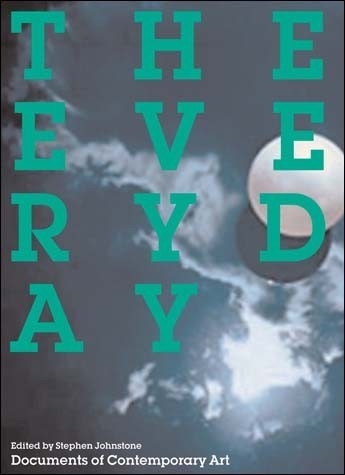
Summary
Writings on the “turn to the ordinary” in contemporary art examine the various ways artists have engaged with the everyday since 1945.
Numerous international exhibitions and biennials have borne witness to the range of contemporary art engaged with the everyday and its antecedents in the work of Surrealists, Situationists, the Fluxus group, and conceptual and feminist artists of the 1960s and 1970s. This art shows a recognition of ordinary dignity or the accidentally miraculous, an engagement with a new kind of anthropology, an immersion in the pleasures of popular culture, or a meditation on what happens when nothing happens. The celebration of the everyday has oppositional and dissident overtones, offering a voice to the silenced and proposing possibilities for change. This collection of writings by artists, theorists, and critics assembles for the first time a comprehensive anthology on the everyday in the world of contemporary art.
Artists surveyed include Chantal Akerman, Francis Alÿs, Vladimir Arkhipov, Ian Breakwell, Stanley Brouwn, Sophie Calle, Marcel Duchamp, Fischli & Weiss, Nan Goldin, Dan Graham, Mona Hatoum, Susan Hiller, Ilya and Emilia Kabakov, Mary Kelly, Lettrist International, Jonas Mekas, Annette Messager, Aleksandra Mir, Roman Ondák, Yoko Ono, Gabriel Orozco, Martha Rosler, Allen Ruppersberg, Daniel Spoerri, Wolfgang Tillmans, Mierle Laderman Ukeles, Andy Warhol, Richard Wentworth, Stephen Willats.
Writers include Paul Auster, Maurice Blanchot, Geoff Dyer, Hal Foster, Suzy Gablik, Ben Highmore, Henri Lefebvre, Lucy R. Lippard, Michel Maffesoli, Ivone Margulies, Helen Molesworth, Nikos Papastergiadis, Georges Perec, John Roberts, David Ross, Nicholas Serota, Michael Sheringham, Alison and Peter Smithson, Abigail Solomon-Godeau, Jeff Wall, Jonathan Watkins.
From Whitechapel: Documents of Contemporary Art
The Everyday
Edited by Stephen Johnstone
Writings on the “turn to the ordinary” in contemporary art examine the various ways artists have engaged with the everyday since 1945.
6 notes
·
View notes
Photo
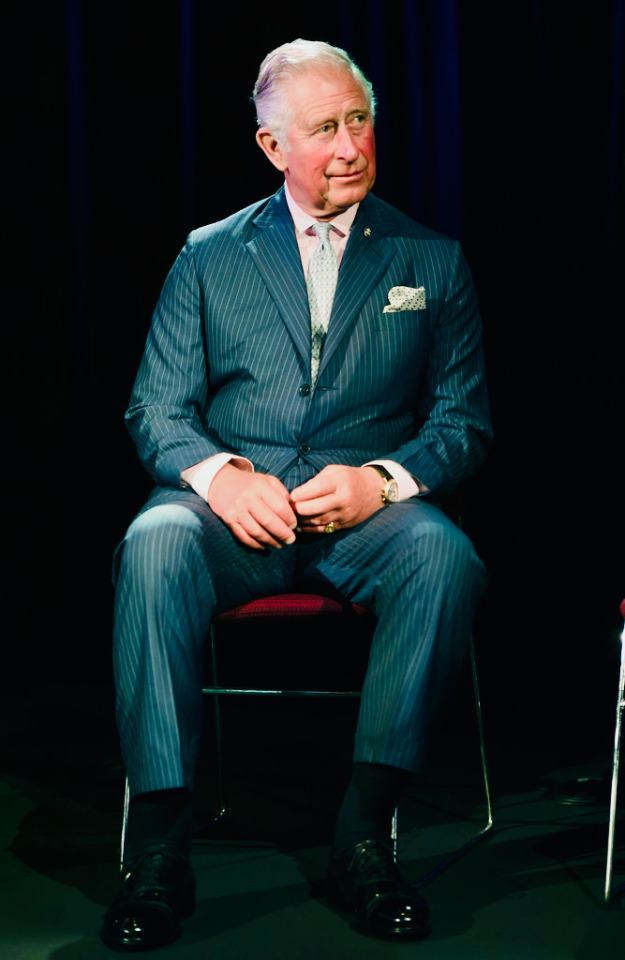
5 September 2018 | Prince Charles, Prince of Wales, Patron, Children & the Arts attends an event at the Royal Albert Hall to discuss the arts and creativity in schools in London, England. The day was attended by industry leaders, including Benedict Cumberbatch, Kate Winslet, Myleene Klass, Sir Nicholas Serota and Nick Gibb MP. (c) Eddie Mulholland-WPA Pool/Getty Images
1 note
·
View note
Link
Britain’s beleaguered arts and heritage sectors have been promised £1.57bn of help in a long-awaited rescue package described by the government as the biggest one-off investment in UK culture.
After weeks of desperate warnings that the UK was facing an irreversible cultural catastrophe without targeted support, ministers announced a package that it said would protect the future of the country’s museums, galleries, theatres and music venues.
The playwright James Graham, who has spoken passionately about the urgent need for investment, said the money appeared to be more than most people in the arts had dared dream of.
“Let’s drill down into the detail but my first reaction is absolute relief and gratitude,” he said. “I think it is a surprisingly ambitious package, especially when you compare it to some of our European neighbours.
“If this package is as ambitious as it looks, then conversations within our sector will now need to turn to what our recovery might look like in terms of protecting any gains made in recent years over inclusion, representation and diversity, and how this support can reach who need it most, particularly outside of London.”
Boris Johnson said arts and culture were the soul of the nation. “They make our country great and are the lynchpin of our world-beating and fast-growing creative industries,” the prime minister said.
“I understand the grave challenges the arts face and we must protect and preserve all we can for future generations, ensuring arts groups and venues across the UK can stay afloat and support their staff whilst their doors remain closed and curtains remain down.”
The package includes:
A £1.15bn support pot for cultural organisations in England, consisting of £270m in loans and £880m in grants.
£100m of targeted support for England’s national cultural institutions and English Heritage.
£120m of capital investment to restart construction on cultural infrastructure and for heritage construction projects in England paused because of the pandemic.
Extra money for devolved administrations, with £97m for Scotland, £59m for Wales and £33m for Northern Ireland.
The package surprised most people in the arts, especially since the mood music from the Treasury had appeared to signal reluctance to intervene too heavily.
Vicky Featherstone, the artistic director of the Royal Court theatre in London, praised the rescue package. “It is an extraordinary amount of money and it means that they have really listened to all the incredible people who have been putting forward the arguments about what is needed and why it is needed,” she said.
“Now we must ensure that the brilliant freelancers that make our theatres are properly supported and that we all get back to making productions for our wonderful audiences as soon as possible.”
Andrew Lloyd Webber, the theatre impresario, said: “It is absolutely critical that Britain’s cultural sector is restored to health as soon as possible, and I look forward to seeing the details of the rescue package and working further with Oliver [Dowden, the culture secretary] and the government to get all of Britain’s theatres – both large and small – open as soon as possible.”
Tamara Rojo, the artistic director of English National Ballet, said: “The arts contribute so much to the social and economic fabric of our society. There was an urgent need for action and I am delighted and relieved that the government has listened and responded. This package gives our sector a fighting chance of survival.”
While hugely welcomed, it comes too late for the highest-profile arts casualty, with administrators for Nuffield Southampton Theatres last week announcing permanent closure, bringing the curtain down on six decades of theatrical history.
The shadow culture secretary, Jo Stevens, said that while the package was “a much-needed injection of cash”, it was “too little too late” for many.
“It needs to reach theatres teetering on the brink fast – especially those across the towns and small cities where venues and arts orgs are so vital to local economies providing many interdependent jobs,” she said on Twitter.
Industry experts said it was too soon to say whether the package would stave off the threat of redundancies already announced by theatres in both the commercial and subsidised sector. They include the West End producer Nimax consulting on making a third of its workforce – 130 people – redundant; Manchester Royal Exchange contemplating the loss of 65% of its staff; and Theatre Royal Plymouth warning that a third of its 340-strong workforce could go.
Decisions on awards will be made by the government working alongside bodies such as the British Film Institute, Historic England, the National Lottery Heritage Fund and Arts Council England (ACE).
ACE’s chair, Sir Nicholas Serota, said: “We greatly welcome this very significant investment by the government in the future of arts and culture in this country and look forward to working with them on next steps.
“I know our amazing artists and creative organisations will repay the faith that the government has shown by demonstrating the range of their creativity, by serving their communities and by helping the nation recover as we emerge from the pandemic.”
Those sentiments were echoed by Alex Beard, the chief executive of the Royal Opera House. “This is a vital next step on the road to recovery for the industry and will help to support and sustain the UK’s vibrant arts ecology through the crisis,” he said. “There is much to achieve over the coming months and this package will be a catalyst for unlocking the extraordinary creativity embedded in the UK’s world-renowned creative industries.”
The announcement follows what has felt like a white-knuckle ride of tension and fear over the future for the country’s arts and heritage sectors. The pandemic has brought theatre and music venues to a cliff edge at a time when they are most needed. Tom Morris, the artistic director of Bristol Old Vic, had warned of the danger of British theatre being destroyed by accident.
Industry leaders had cast jealous eyes at nations such as Germany, which promised, early in the pandemic, €1bn to a fund supporting theatres, museums and other organisations to “open their doors again as soon as possible after the forced break”.
Cultural institutions including London’s Old Vic, Shakespeare’s Globe and the Royal Albert Hall had all said they were on the brink of closure without an investment package.
Julian Bird, the chief executive of the Society of London Theatre and UK Theatre, has led industry lobbying for investment to save theatre from ruin. He said the package was “hugely welcome”.
He added: “Venues, producers and the huge workforce in the theatre sector look forward to clarity of how these funds will be allocated and invested so that artists and organisations can get back to work as soon as possible.
“Our industry’s united ambition is to be able to play its vital role in the nation’s economic and social recovery and this investment will allow us to do so.”
Performing arts venues have seen their income fall to zero and warned that they do not have the money to reopen with physically distanced audiences. The investment package will allow venues to stay afloat while the doors remain closed.
How soon they can reopen remains to be seen. Boris Johnson said on Friday that a timetable would be published in the coming week.
Dowden said the investment package was “unprecedented and world-leading. Our arts and culture are the soul of our nation. I said we would not let the arts down and this massive investment shows our level of commitment.”
While theatres and concert halls remain closed, galleries and museums in England will this week start slowly reopening. The National Gallery opens its doors to the public on Wednesday, with visitors having to book time-slots in advance. Once in, they will follow three one-way art routes, but people can take their time should they want to.
In many cases it is costing more for museums to reopen with fewer visitors than it would to remain closed. The rescue package will go some way to alleviating those concerns
14 notes
·
View notes